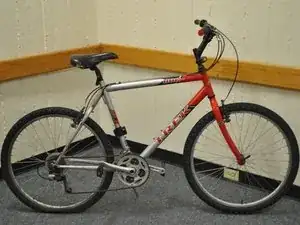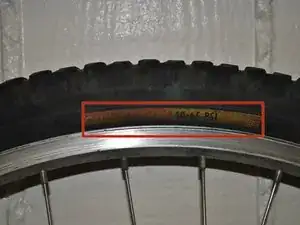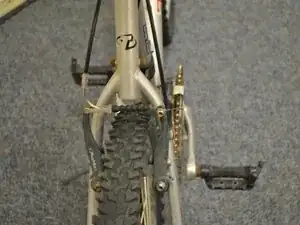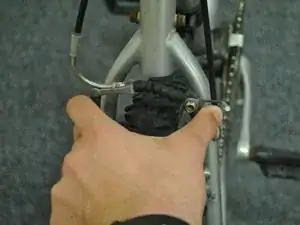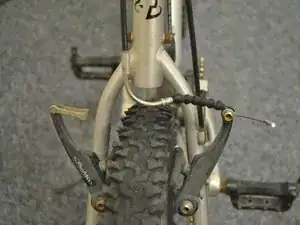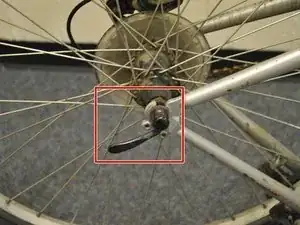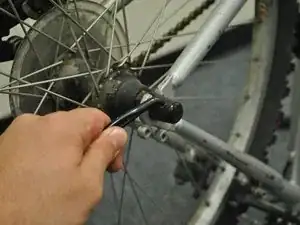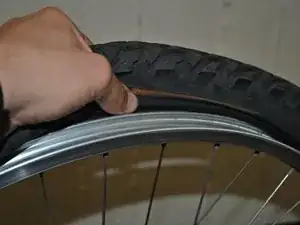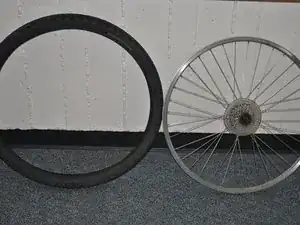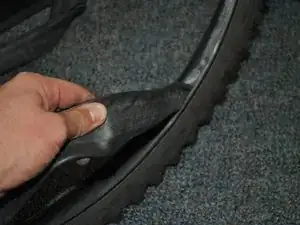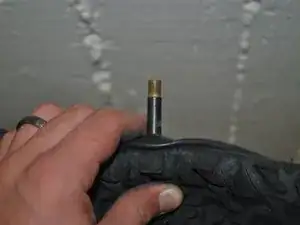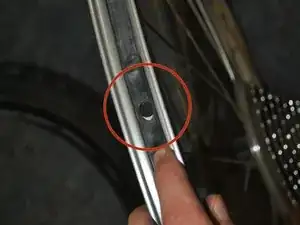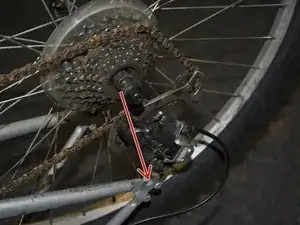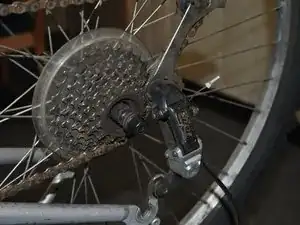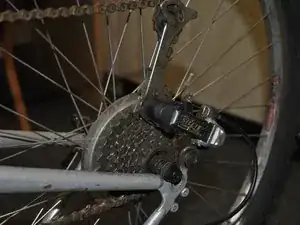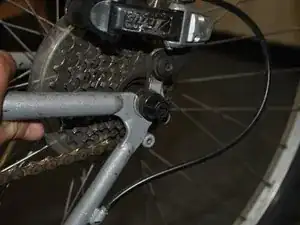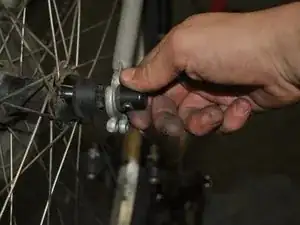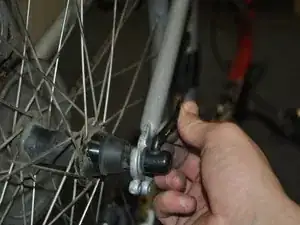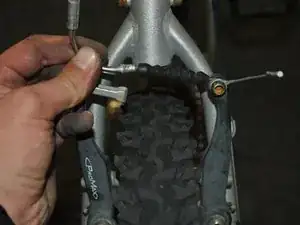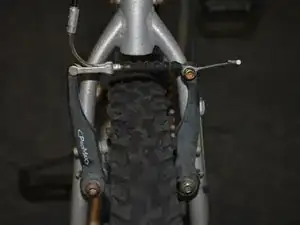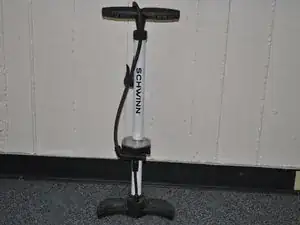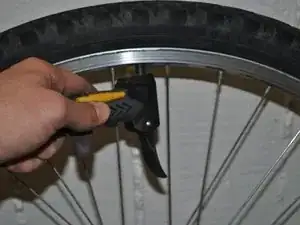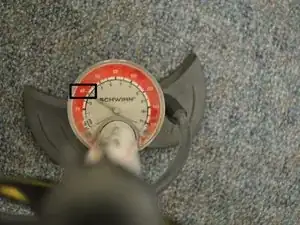Einleitung
There are many reasons why a bicycle tire may become flat. Often it is caused by running over debris or pumping up the tires too much. Punctures can create small holes that can cause slow leaks whereas tires pumped up too much will cause the inner tube to burst. When anything like this occurs, the inner tube needs to be replaced. This guide will demonstrate the process required to fix a worn or punctured bike tube on a Trek 800 model bicycle with no prior experience. After finishing, your bicycle will be ready to ride!
Werkzeuge
Ersatzteile
-
-
Disengage the rear brake before you remove the rear wheel.
-
Pinch the arms to compress the brake cable.
-
Pull the cable out of the lever and it will fully release.
-
-
-
Locate the skewer on the center of the wheel attached to the bicycle frame slots.
-
Turn the skewer lever away from the bicycle.
-
Turn the skewer cap counter clockwise.
-
Once it is loose enough, you can pull the tire off, but do not pull it yet entirely off.
-
-
-
Pull out the punctured tube from the tire and replace with the new tube.
-
Alternatively you might want to patch your tube's puncture.
-
-
-
Put the tire with the new tube inside back on the rim.
-
Make sure the hole in the rim lines up with the valve on the tube properly.
-
-
-
Re-attach the rim to the bike frame in reverse order of removal.
-
Make sure the chain aligns with the sprocket.
-
Slide the quick-release skewer into the slots in the bike frame.
-
-
-
Make sure the skewer is completely inserted into the frame slots before tightening.
-
Rotate the skewer cap clockwise and ensure a snug contact between the skewer caps and the frame slots.
-
Rotate the skewer lever towards the bicycle frame.
-
If all of your steps were completed correctly you should be free to ride. Enjoy.
Ein Kommentar
Thanks for providing these instructions. But I think the most difficult step (getting the tire off the rim) should be explained in more detail.
